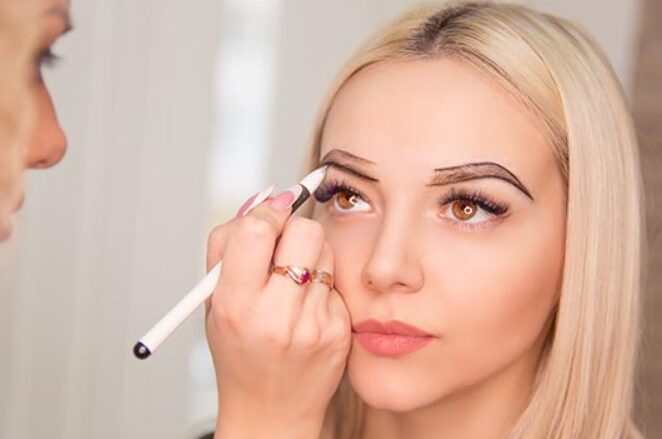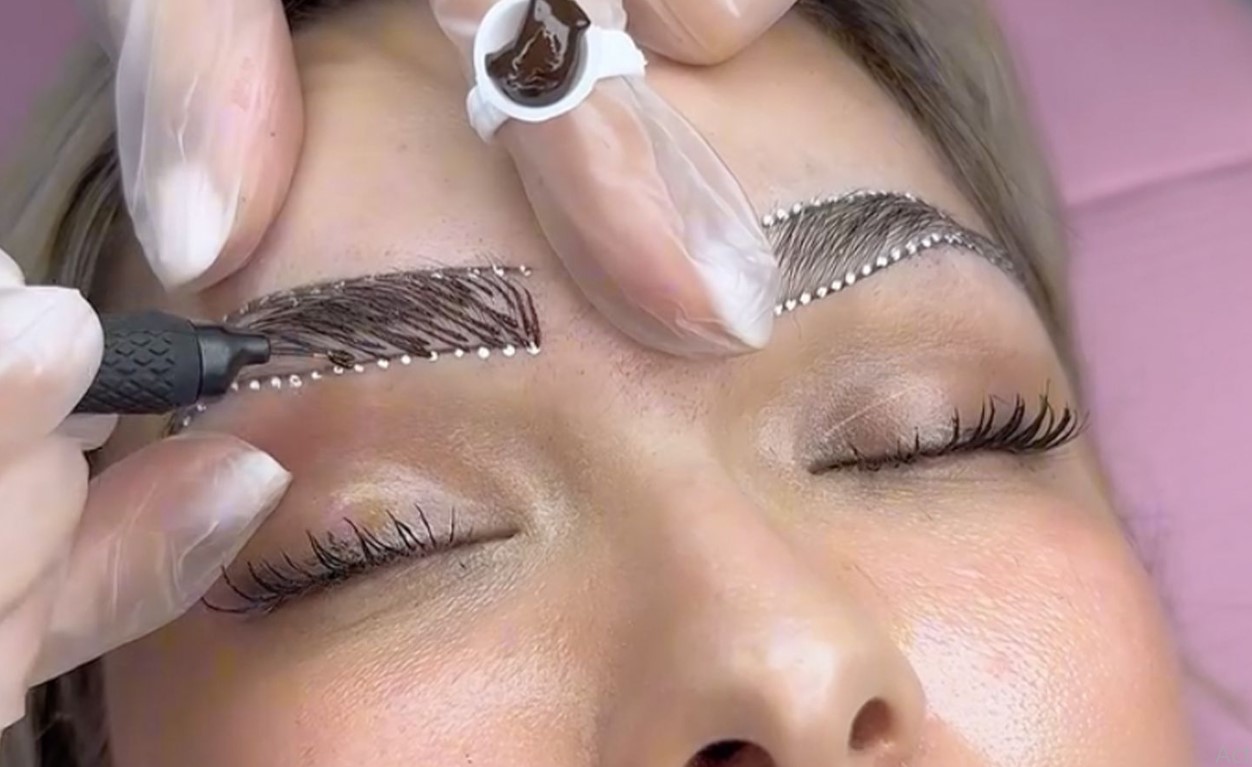If you’re tired of struggling to get perfect brows every day, stop wasting your time and consider the option of tattooing your eyebrows. Microblading and microshading are two highly popular semi-permanent tattooing techniques that can help you achieve flawless eyebrows with minimal maintenance. Both techniques use similar tattooing methods, but microblading creates hair-like strokes with fine needles, giving a natural appearance, while microshading uses tiny dots of pigment to fill in your brows, resembling brow powder for a more defined look. So don’t hesitate to choose either of these techniques, depending on your skin type and desired look, and get ready to have stunning eyebrows every day without any hassle.

Factors to Consider
Choosing between microblading and microshading depends on factors like skin type, desired brow appearance, and maintenance expectations. Microblading suits dry skin and offers a subtle look, while microshading is ideal for oily or sensitive skin, providing a bolder, longer-lasting result. Often, a combination of both techniques, known as hybrid brows, is preferred, offering a mix of definition and natural detailing.
Procedure to Mind
Both microblading and microshading require two sessions, with the initial appointment and a follow-up session after 6-8 weeks for touch-ups. Microblading yields naturally full brows and is less painful, making it suitable for beginners. On the other hand, microshading fully defines brows and lasts longer due to its deeper pigment injection.
What to Prepare
Preparing for microblading or microshading involves avoiding certain treatments like botox, laser treatments, or waxing for a few weeks before the appointment. Refrain from using retinol-based skincare and avoid facials to prevent skin sensitivity. Additionally, abstain from tweezing eyebrows and limit sun exposure, caffeine, alcohol, and certain supplements to ensure optimal results and minimize the risk of skin irritation during the healing process.
Differences between Microblading and Microshading:
| Aspect | Microblading | Microshading |
|---|---|---|
| Technique | Manual creation of hair-like strokes with fine needles | Application of tiny dots of pigment to fill in brows |
| Appearance | Natural, feathery look resembling individual brow hairs | Denser, more defined appearance similar to filled-in brows with makeup |
| Suitability | Ideal for normal to dry skin types seeking a subtle look | Suitable for oily or sensitive skin types and those desiring a bolder look |
| Longevity | Pigment fades faster, requiring more frequent touch-ups | Lasts longer due to deeper implantation of pigment |
| Pain Level | Lasts longer due to the deeper implantation of pigment | Pain level may vary, typically similar to microblading |
| Combination | Can be combined with microshading for a hybrid brow look | Can be used alone or combined with microblading for tailored results |
Benefits of Microblading
- Leaves brows with a naturally-full look
- Ideal for normal to dry skin types
- Great introductory treatment for tattooed eyebrows
- Offers a subtle, approachable choice for beginners
- Fades slightly more quickly, requiring less upfront commitment
- Potentially less painful than other methods
Benefits of Microshading
- Ideal for oily or sensitive skin types
- Fully defines the shape for a strong brow look
- Helps make brows more symmetrical, especially if one is sparse
- Lasts longer on the skin than microblading
- The pigment is injected deeper into the skin, making it more concentrated
- Eliminates the need for eyebrow pencils
Who Should Avoid
Microblading and microshading are popular cosmetic procedures designed to enhance eyebrow fullness, but they may not be suitable for everyone. Here are individuals who should avoid these procedures:
- Individuals with specific skin conditions such as eczema, psoriasis, or dermatitis may experience adverse reactions to the pigments utilized in microblading.
- Pregnant and nursing women are advised against these procedures due to limited research on the effects of the pigments and process on pregnancy and breastfeeding.
- People with underlying health conditions affecting healing or those who are immunocompromised may be at higher risk for infection or poor healing.
- Those who have recently undergone cosmetic procedures in the same area should wait until fully healed before considering microblading or microshading.
- Individuals with unrealistic expectations about the results should have a clear and realistic understanding of what these procedures can achieve.
- If prior experiences with microblading have been negative, it is advisable to avoid further sessions.
- Those taking blood-thinning medications may experience excessive bleeding during the procedure, which can impact the outcome.
- Individuals prone to developing keloid scars should steer clear of microblading, as the procedure involves making small cuts in the skin
How To Prepare for Microblading or Microshading

- Avoid scheduling botox, laser treatments, or waxing appointments for at least 3-4 weeks before your semi-permanent eyebrow tattoo session.
- Refrain from using skincare containing retinol or vitamin A on your face for 2 weeks before your appointment.
- Do not book a facial within 2 weeks of your microblading or microshading session to prevent thinning of the skin and increased risk of bleeding during the procedure.
- Stop tweezing your eyebrows one week before your scheduled session.
- In the 48-72 hours leading up to your appointment, avoid direct sunlight exposure, tanning, and consumption of caffeine, alcohol, aspirin, ibuprofen, and fish oil supplements.
- These precautions help prevent skin dehydration, which can lead to thinner skin and increased vulnerability to bleeding or irritation during the healing process.
Duration and Structure of Your Appointment
The duration and structure of your appointment for microblading, microshading, or hybrid brow treatment may vary slightly based on the devices used, but generally, they follow a similar format and time frame. Expect your appointment to last around 2-3 hours, covering everything from initial consultation to completion.
During the first 45-60 minutes, your microblading expert will conduct an intake session to understand your lifestyle, makeup and skincare routines, desired results, and any concerns you may have about the procedure.
After discussing your preferences, the expert will proceed to draw the new shape for your brows, guiding the microblading or microshading process while communicating with you to ensure satisfaction. Following this, a topical anesthetic will be applied to your brows to minimize discomfort during the procedure. The numbing cream will remain in place until just before treatment begins.
Typically, the expert will focus on one brow at a time, wiping off the numbing cream, performing microblading or microshading, and repeating the process for the other brow. The procedure itself should take around 45 minutes.
After undergoing microblading or microshading, it’s crucial to adhere to a proper after-care routine to ensure optimal results and prevent complications. Here’s a summary of the after-care instructions:
Read Also
Microblading for Oily Skin: Tips for Long-Lasting Results
Blonde Eyebrow Microblading: The Ultimate Guide Need To Know
Microshading After-Care
- Wash your face cautiously, avoiding the treated area.
- Duration: Follow the after-care routine for approximately 14 days.
- Healing: Complete healing typically takes 6-8 weeks, with after-care being crucial immediately post-treatment until the brows cease peeling.
- Clean the area using a damp cotton pad and gently pat dry.
- Apply the provided aftercare ointment as directed.
- Refrain from applying makeup, or skincare products, or engaging in excessive sweating near the brow area.
Microblading After-Care
- Face Washing: Use a damp sponge or washcloth to delicately cleanse your face while avoiding the brow area.
- Complications: Be vigilant for short-term side effects such as slight bleeding, mild bruising, or tenderness.
- Maintain cleanliness by washing the area with mild soap and water when deemed safe.
- Apply the recommended ointment to aid in the healing process.
- Avoid allowing the skin to become excessively dry, but also steer clear of using antibiotic ointments unless specifically prescribed by a consultant.
FAQ’s
Which is better, microshading or microblading?
Microshading and microblading are semi-permanent eyebrow techniques with different applications and results. Microshading creates a powdered look with pin-like dots, suitable for sensitive or oily skin. Microblading, on the other hand, involves hair-like strokes for a natural look, ideal for dry skin. Choose based on your skin type and desired brow appearance.
Microblading tends to be pricier than microshading due to its intricate needle-based process, creating hair-like strokes. Microshading, using a rotary tool for a softer, powdered effect, is generally less expensive. Prices vary by location and technician expertise, typically ranging from $400 to $1,200 for both procedures.
Microshading provides a natural appearance, resembling eyebrow makeup. Using tiny pigment dots, it creates a soft, powdered look, enhancing brows without a makeup-like effect. Ideal for those desiring fuller brows with a natural appearance.
